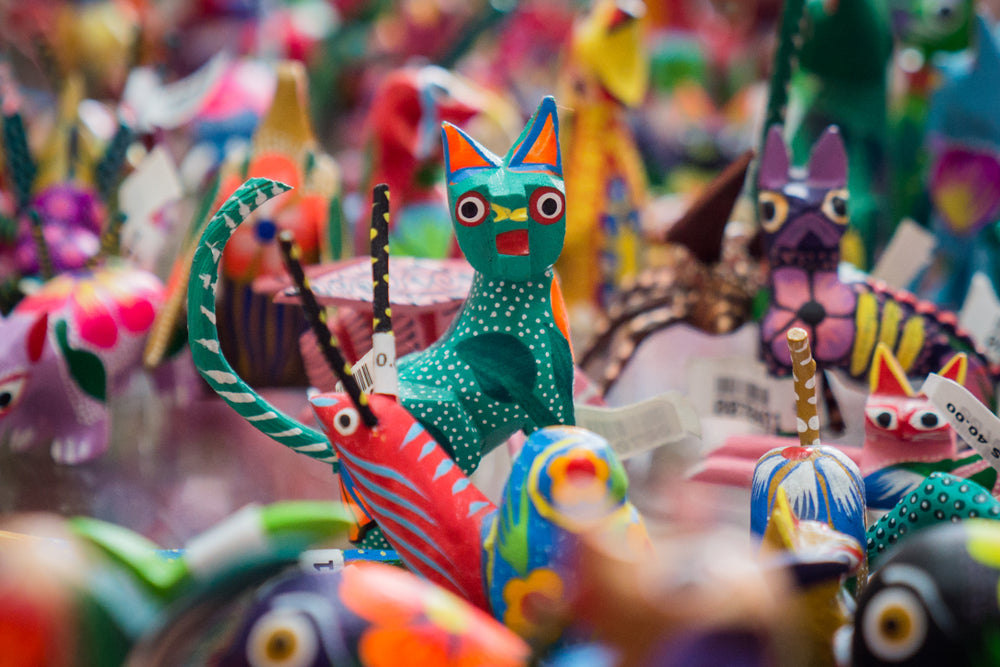Every culture has its unique expression of craftsmanship, as diverse and vibrant as the world itself. Crafts, also known as handicrafts, are intricately woven into the tapestry of our global heritage. They represent a rich tapestry of history, tradition, creativity, and innovation, preserved through generations and celebrated across borders. In this blog post, we will embark on a fascinating journey, exploring unique crafts from around the world.
Japan: Kintsugi
Let's start our journey in Japan, with the beautiful art form known as 'Kintsugi'. Originating from the 15th century, this craft technique involves mending broken pottery with a lacquer mixed with powdered gold, silver, or platinum. Rather than concealing the breakage, Kintsugi highlights the "scars" as a part of the item's history, embodying the philosophy of resilience and the beauty of imperfection.
India: Block Printing
Venturing to the Indian subcontinent, we come across a rich tradition of textile crafts. Among them, Block Printing stands out. Practiced mainly in Rajasthan, it involves stamping fabric with intricate designs using hand-carved wooden blocks. The skillful blending of colors and patterns result in vibrant, detailed fabric that's a true work of art.
Norway: Rosemaling
In the serene landscapes of Norway, the folk art of 'Rosemaling' (Rose Painting) thrives. Originating in the 18th century in rural valleys, Rosemaling is characterized by 'C' and 'S' shaped scroll motifs, floral designs, and flowing lines, often painted on wooden items. This traditional craft adds a touch of elegance and color to household objects, turning them into pieces of art.
Native American: Basket Weaving
Native American tribes have been masters of basket weaving for centuries. Using materials like pine needles, birch bark, willow, or sweetgrass, they create intricately woven, durable baskets. Each tribe has its unique style and pattern, and the baskets are not just functional objects, but also cultural symbols.
Morocco: Zellige
In Morocco, the mosaic tile art 'Zellige' reflects the country's Islamic and Moorish influences. Made from colorfully glazed terracotta tile pieces, Zellige patterns are geometrically complex and stunning. They adorn everything from fountains to walls, flooring to tables, encapsulating the vibrant spirit of Moroccan culture.
Mexico: Alebrijes
The fantastical creatures known as 'Alebrijes' have their roots in Mexican folk art. These brightly colored sculptures, typically made from paper mache or carved from wood, depict imaginative and dreamlike creatures. They are a testimony to the Mexican celebration of color and the boundlessness of human imagination.
Russia: Matryoshka Dolls
Known worldwide, Matryoshka or nesting dolls, are the pride of Russian handicrafts. These sets of wooden dolls of decreasing sizes, placed one inside another, often depict traditional Russian peasant girls but can come in various other themes. Each doll is hand-painted with fine details, representing the high level of craftsmanship involved.
Ghana: Kente Cloth Weaving
Our journey ends in Ghana, where the craft of Kente cloth weaving is highly esteemed. The Asante and Ewe people traditionally weave this brightly colored, intricate cloth strip by strip. Every color and pattern has a distinct symbolic meaning. Kente cloth is worn on important occasions, and it embodies a visual representation of history, philosophy, ethics, and social values.
Italy: Murano Glass Blowing
In the Venetian lagoon lies the island of Murano, renowned for its long-standing tradition of glass blowing. Dating back to the 8th century, this craft involves molding molten glass into exquisite shapes and forms. Murano glass products, ranging from decorative figurines to jewelry, are lauded for their vibrancy, clarity, and intricate designs.
China: Cloisonné
Cloisonné is a sophisticated ancient technique for decorating metalwork objects, often used in small pieces of jewelry or to create larger enamels and ceramics. The technique involves affixing wire designs to a metal object and filling the resultant spaces with enamel paste before firing to create beautifully colored designs. It's an emblem of Chinese artistry with a rich history dating back to the Yuan Dynasty (1271-1368).
Colombia: Mochila Bags
In Colombia, the Wayuu people from the Guajira Peninsula are famous for weaving Mochila bags. These bags are made from cotton threads and carry geometric patterns and vibrant colors. Each bag is unique and can take up to a month to weave. The Mochila bags have become a significant source of income for the Wayuu people and a cultural symbol of Colombia.
Turkey: Iznik Pottery
In the town of Iznik, Turkey, a unique style of pottery was born that beautifully marries Byzantine and Ottoman art. Known as Iznik Pottery, this craft involves creating beautifully decorated ceramics with bright colors—most notably a unique cobalt blue and turquoise—depicting intricate patterns of flowers, fruits, and abstract designs.
Handicrafts are much more than just decorative pieces—they are expressions of cultural identity, human creativity, and ingenuity. Each craft narrates a story, a story of its origin, its people, their beliefs, and their history. In the face of industrialization, the preservation and appreciation of these traditional handicrafts is more crucial than ever.
By buying handmade products, we not only support local communities but also help preserve these precious skills and cultural narratives. Let's appreciate the diverse craftsmanship that our world has to offer, celebrating the differences that make each culture unique and honoring the similarities that bind us together in a universal language of art and creativity.

